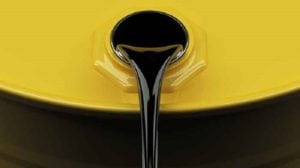The Russian market looks inexpensive and valuations are near trough levels compared to historical averages. Valuations have been depressed based on changes in oil price, geopolitical issues, and the perception of high political and corporate issues.
Undervalued
While we accept these reasons at face value, the reality is that many of these issues have either improved or remained the same and don’t completely justify the significant valuation discount.
Politics and policy change has historically been a significant driver of the market. With elections out of the way, political risk has subsided and should largely support the market. Russian President Vladimir Putin seems committed to shift from an export-driven strategy to a strategy focused on new investments, increases in productivity and the introduction of new innovations. We believe the market would be looking for his ability to deliver on this strategy to maintain growth.
Meanwhile, after 18 years of negotiations Russia has joined the World Trade Organisation. The immediate impact will benefit the Russian consumers as $6bn of import tariffs are lifted, but longer term the biggest benefit should be more foreign direct investment, as we expect the same trend as for China which saw a sharp increase in annual FDI flows following its WTO entry in 2002.
In our view, Russia presents a strong macro story compared to rest of Europe, growing at a rate of 4.5% to 8.5% a year at the GDP level for the past decade, excluding the post-crisis year of 2009. Part of the reason is that Russia is not plagued by huge amounts of sovereign, corporate, and household debt the way the developed world is.
Russia should be able to deliver GDP growth between 4% and 5%. We see significant capacity for Russia to continue growing on the consumption front going forward. With a growth of 4%-5% Russia should be able to balance the budget and have a trade surplus.
Driven by oil
The oil price is an important driver of the Russian market and anyone considering investing here needs to have a fairly developed view on where the oil price is likely to go. Our view, supported by the oil future’s curve, anticipates $90 to $110/bbl range over the medium term. Global demand/supply has not changed radically so this range should be reasonable and supportive of the Russian macro picture.
On the sector level, we see deep value in the energy sector versus oil companies in other markets; the Russian oil industry trades at roughly a 40%-50% discount to global and emerging market peers. The oil sector taxation reform and increasing InterOil Corporation participation supports the investment case.
We also find financials being attractively valued, supported by strong loan growth, normalisation of asset quality and the possibility of write-backs. We see the sector as direct play on Russia’s recovering economy.
Within materials, we believe selected integrated steel and mining names look attractive. Russian steel names are typically fully integrated with key raw materials leaving them well placed to benefit from increasing global iron ore and coking coal prices.







